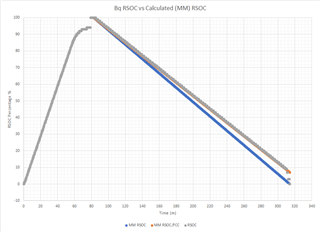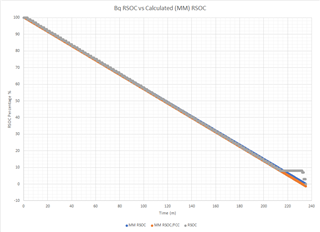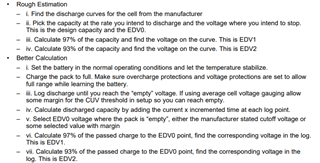Hello,
I have a couple of instances on batteries where my learned capacity doesn't appear to be learning properly, in some cases it is learning up when I'd expect it to learn down. Examples such as:
- Learned FCC of 3903
- Fully charged the pack up, let it sit and self-discharge for a few days, RemCap was 3792 before I started discharge
- Discharged the pack, I got 3659mAh out of it, learned FCC went up to 4015. (I would have expected this to go down)
- Charged the apck back up, didn't let it sit, discharged it right away.
- I got 3873mAh out of the pack, FCC updated to 4130 (again, I would have expected this to go down).
I have another pack that I logged, FCC was 10254 at the beginning of the discharge cycle, I took out 10167mAh by my calculations, at the end FCC updated to 10513 which means it went up instead of down. Log for this one:
Likewise, here is another battery I logged, FCC was 4147, I calculated that I took out 3959Ah, and FCC was updated to 4215
Then I have some where we learned in the right direction, but not nearly enough and well under the register settings for learn up/learn down. Here are 2 excel file logs where you can see the following:
- Started out, FCC 4206
- Discharged and took out 3954mAh
- FCC updated to 4204 (down, but only by 2mAh)
- Charged back up
- Discharged and took out 3908mAh
- FCC updated to 4148 (down, but still not down enough to what we actually get).
HV98 Learn Down Not Enough.zip
Please let me know what you see in the logs
Thanks, Mike




